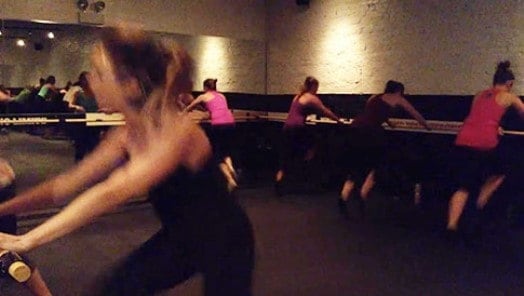“Move it. Feel it. Don’t give up!” You can coach yourself through the burn with your own pep talk.
Exercising is hard, but tell yourself it feels good, and you might just start to believe it, new research shows.
The research revealed that mentally and verbally encouraging yourself while exercising can keep you going longer and make you think a difficult workout is easier.
Study authors in England and the Netherlands asked 24 people to bike for as long as they could and then rate their level of effort from one to 10. Two weeks later, the group did the same thing but with one change – positively encouraging themselves while cycling, whether aloud or in their heads.
The American College of Sports Science published the study recently online in the journal Medicine and Science in Sports and Exercise.
Using self-motivation, they biked longer and rated their effort level as lower, even though their heart rates revved up the same as before, meaning the exercise felt easier even though it was more arduous. But this doesn’t mean pushing through the pain, a practice that takes a toll on even professional athletes.
In today’s “push yourself” workout culture, it’s easy to blur the line between working hard and going too far. And trainers, instructors and fitness enthusiasts are questioning the benefits of exercising to exhaustion.
CrossFit, a popular endurance training program, is a favorite target of critics, who point to the number of CrossFitters giving themselves Rhabdomyolysis, a serious condition when muscle fiber is released into the blood stream, causing kidney damage, as evidence.
“CrossFit is a very great methodology. There are a lot of really great things going on in the CrossFit community,” says former CrossFit instructor Lina Belkin, now a personal trainer at Chicago-based Barre Bee Fit. “The danger – not just with CrossFit but with anything that’s taking you to the extreme – is that you really have to listen to your body,” Belkin says.
Belkin’s fellow Barre Bee Fit instructor Madeline Franke says that part of listening to your body means knowing pain from burn.
“You can tell the difference between a good hurt and a bad hurt,” Franke says. “A good hurt is a deep, intense burning feeling in your muscle. A bad hurt is a sharp pain, which could be a muscle being pulled or a joint out of place.
“A lot of times the muscle will start to shake, start to quiver, and that’s a good thing,” Franke says. “That’s something we want because your muscle is changing shape.”
But recognizing pain from hard work isn’t easy because “most of us are really disconnected from our bodies,” Belkin says. Stop when you feel yourself pushing through the pain, she advises.
“I’m a victim of it myself,” Belkin says. “It’s really easy to throw form to the side, throw technique to the side, just because I wanted to win. Just because I wanted to be the best.”
When athletes are tired, they’re more likely throw form out the window and open themselves up to a higher chance for injury, Belkin says. She uses the example of blowing out a knee from poor form, lifting too heavy or rushing through squat repetitions.
“When you start doing things weird with your form because your body’s getting tired, that’s our opportunity as an instructor to say, ‘Listen, this isn’t about how many you can do, this is about making sure your repetitions are quality repetitions,’” Belkin says.
But it’s up to athletes to hold themselves accountable, both by pushing and also limiting themselves.
“There’s a difference between your mind being lazy like, ‘Oh this is hard, I don’t want to do it,” versus, ‘This is really hurting me,’” Belkin says.
So next time you want to give up, just ask yourself, are you tired or are you in pain? If it’s the former, being your own cheerleader may just keep you going.



